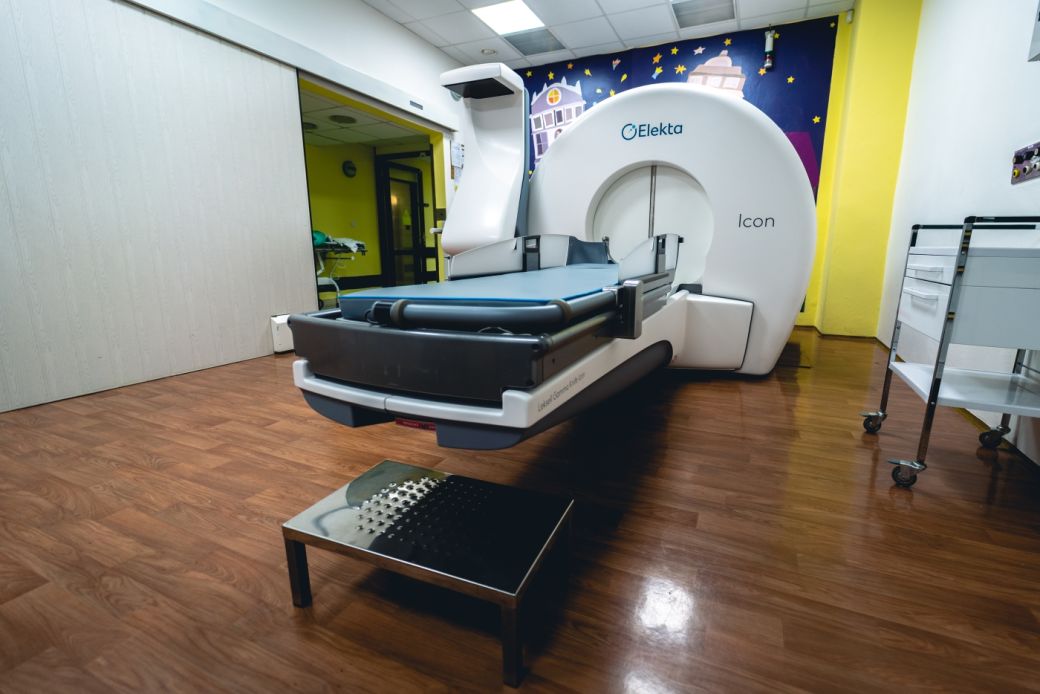Contacts and consultations Map
Department of Stereotactic and Radiation Neurosurgery
The Department of Stereotactic and Radiation Neurosurgery (OSRN) is one of the most productive departments of its kind in the world and performs more than 1000 radiosurgical and 170 surgical procedures annually. A total of 2700 patients are examined in our outpatient clinic. We have three standard rooms with a total capacity of eight beds for hospitalisation.
About us
- The Department of Stereotactic and Radiation Neurosurgery was established in October 1992. We are the only department in the Czech Republic that offers stereotactic radiosurgery using the Leksell gamma knife and minimally invasive stereotactic neurosurgery in its entirety.
- We closely cooperate with the neurosurgery department, neurology department and radiodiagnostic department of Na Homolce Hospital, thus co-creating a comprehensive centre for the treatment of neurosurgical and neurological diseases.
- In the Deep Brain Stimulation (DBS) programme we are a partner department of the Neurological Clinic of the 1st Faculty of Medicine in Prague and we co-create the Centre for Interventional Therapy of Motor Disorders (iTEMPO).
- We are a training centre for stereotactic radiosurgery and we are engaged in scientific publishing.

We celebrated 30 years of Gamma Knife operation and performed more than 24,000 radiosurgery operations.
- The Leksell Gamma Knife treatment is one of the so-called non-invasive surgical methods that do not require open surgery. Our radiation neurosurgeons use the Gamma Knife to treat intracranial tumors and vascular malformations (congenital anomalies of the blood vessels of the brain), and to affect certain functional diseases of the central nervous system - most commonly trigeminal nerve pain. In collaboration with eye specialists, the Gamma Knife also treats certain eye diseases, most commonly eye tumours.
- The Leksell Gamma Knife is designed specifically for operations in the head area. The procedure involves a single application of a high dose of radiation (gamma rays), targeted only to the diseased area, so that the surrounding tissue is spared. The individual beams themselves are weak, but are guided so that they converge and intersect at a common focus. Doctors position the patient's head so that the disease site is exactly at the intersection of the beams, where the effect of the radiation is added together. Tissues lying outside this intersection are only exposed to a minimal radiation dose. The instrument allows doctors to change the size of the focal point by means of apertures. By using multiple foci, they can also stack the target radiation volume in stages so that it closely follows the shape of even a very irregular tumour. Unlike conventional surgery, the result is not immediately visible after the procedure, but only becomes apparent over time, depending on the diagnosis.
Leksell Gamma Knife Treatment Guide


